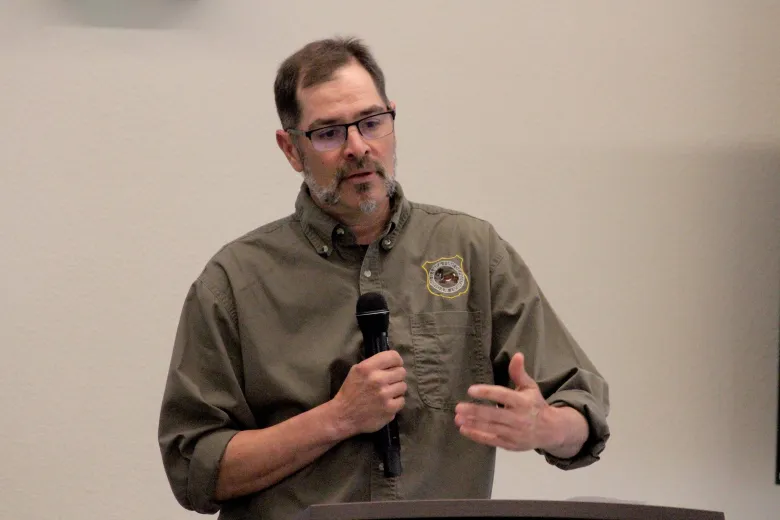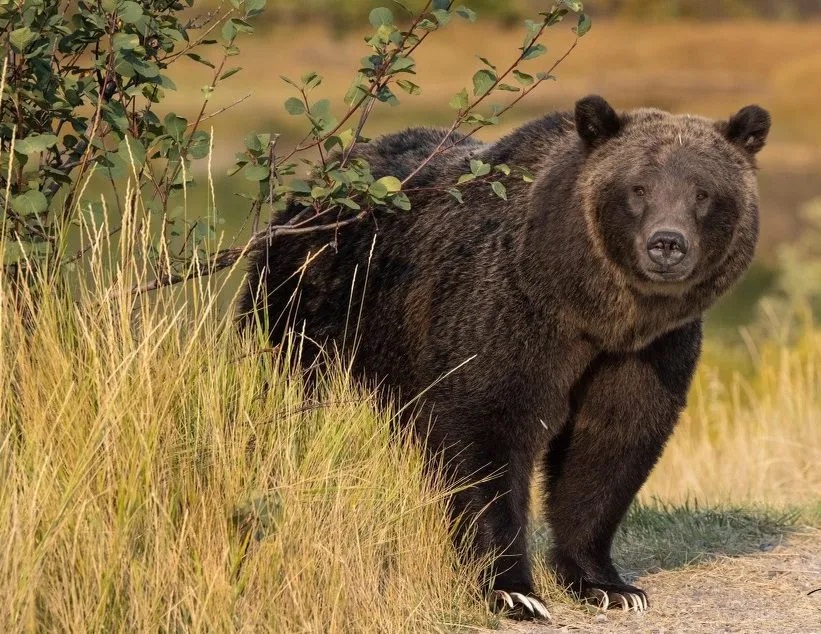By Mike Koshmrl DAILY MONTANAN
Fresh grizzly bear bloodlines are expected to arrive in the Greater Yellowstone Ecosystem this summer, adding genetic diversity to a population of animals that’s been isolated for a century.
The infusion of genetics will come from the North Continental Divide Ecosystem, and it will roll down the highway in the form of a slumbering grizzly or two.
Why truck in grizzly bears to a population last estimated at nearly 1,000 animals?
Montana and Wyoming — which have hashed out an agreement — are translocating bears as part of the effort to convince the federal government that they’re responsible stewards of a large carnivore species, which the states contend no longer requires Endangered Species Act protections.
“We’re trying to demonstrate to everybody, the courts included, that connectivity isn’t an issue that should impede delisting,” said Ken McDonald, wildlife division chief for Montana Fish, Wildlife and Parks. “Until it’s happening regularly, naturally, we can cover this with human-assisted movements.”
The two grizzly bear populations aren’t far from each other — the leading edges are just 35 miles apart — but there’s never been a documented case of a Northern Continental Divide Ecosystem grizzly traveling to the Yellowstone Ecosystem and procreating. Grizzlies have gone the other direction, trekking north well into Montana, but that doesn’t accomplish the goal of creating gene flow into the isolated population.

Firm plans are in place to force the issue as soon as this summer. Montana Fish, Wildlife and Parks has staffed up, adding two employees who will be used during the summer and fall to assist with the grizzly translocation project, McDonald said. Those expert grizzly trappers will be targeting animals with specific attributes.
“Ideally, it’d be a bear that has no history of any conflict,” McDonald said. “And ideally, a younger aged female.”
Two conflict-free females
Wildlife officials intend to move the bears as soon as mid-June, but no later than mid-August. “We don’t want to move them too late, when they’re not ready to den,” McDonald said. “So it’s a pretty finite window.”
Other parameters of the genetic augmentation pilot project are described in an appendix of Montana’s draft grizzly bear management plan. That document estimates the frequency of translocating grizzlies at two to four animals every decade.
The grizzly-moving operation in the absence of a natural dispersal is also a commitment included in the tri-state memorandum of agreement that Wyoming, Montana and Idaho struck to guide management of the Greater Yellowstone Ecosystem’s grizzly bears.

“In the tri-state MOA, we’re committed to translocating at least two grizzly bears from outside by 2025,” Wyoming Game and Fish Department large carnivore supervisor Dan Thompson told WyoFile.
Neither Thompson nor McDonald identified exactly where the Glacier-region grizzlies would be released, but there are some requirements and goals. It will need to be within the “demographic monitoring area,” which is a 19,278-square-mile zone in the Greater Yellowstone region’s core where bear numbers are estimated.
Ideally, McDonald said, the release site will be in a low-density grizzly bear habitat. Translocating the grizzly farther south — possibly into Wyoming — is another ideal, he said, because it’s farther geographically from where the bear will have been captured in Montana, and it’ll make the animal more likely to stay.
“We’ve been working with Wyoming on potential places,” McDonald told members of the Interagency Grizzly Bear Committee’s subcommittee for the Yellowstone Ecosystem, which met in Jackson in November.
Although state wildlife managers have committed to translocating grizzlies into the Greater Yellowstone Ecosystem, the current level of genetic diversity is not “in dire straits,” Interagency Grizzly Bear Study Team Leader Frank van Manen said.

“We have a little bit lower genetic diversity than other populations, but it’s not declining further,” he said. “It’s moderate genetic diversity, is how I would classify it.”
The genetic augmentation appendix of Montana’s draft grizzly bear management plan calls the ecosystem’s genetic isolation a “long-term conservation concern.”
“The rate of inbreeding has been very low (0.2% over 25 years),” the document states, “and no inbreeding effects have been detected.”
Genetic concerns?
Nevertheless, U.S. District Court Judge Dana Christensen sided with environmental groups in 2018 on the question of genetic diversity, ending a short stint where the Northern Rockies states had jurisdiction over their Ursus arctos horribilis populations.
Thompson pointed out that genetic diversity was an issue decades ago when the Yellowstone region population was much lower and “bottlenecked,” but nowadays, with many times more bears, it isn’t much of a concern, he said.
“We’ve demonstrated it is not an issue anymore,” Thompson said, “but (translocation) is another way to address the issues that some people have.”
Thompson made a “Star Wars” analogy out of environmental groups leveraging genetic diversity during the last round of litigation over grizzly delisting.
“It was the thermal exhaust port in the Death Star,” he said. “Opponents of delisting look for weaknesses and try to exploit them. We don’t feel that genetics are a weakness, but (translocation) is just another thing that we can do.”














